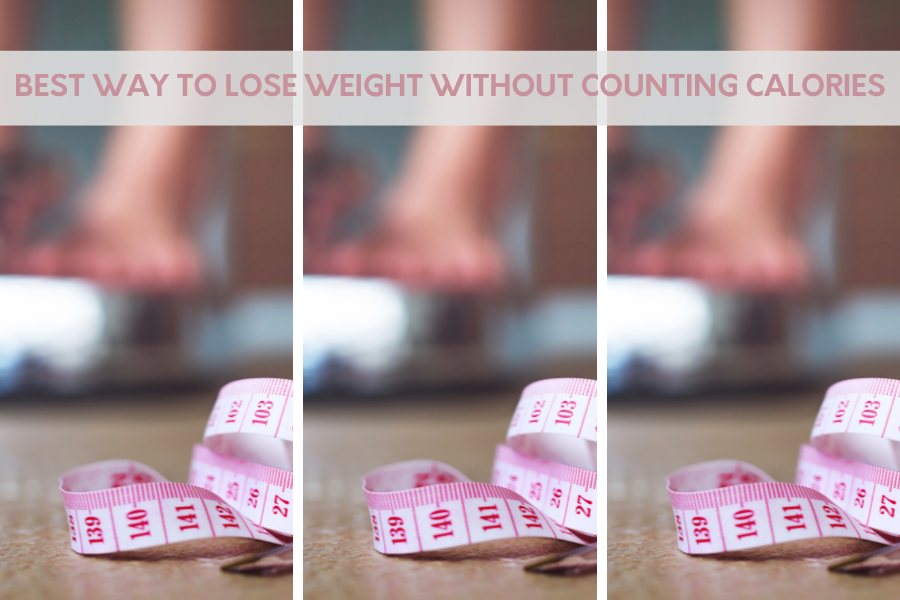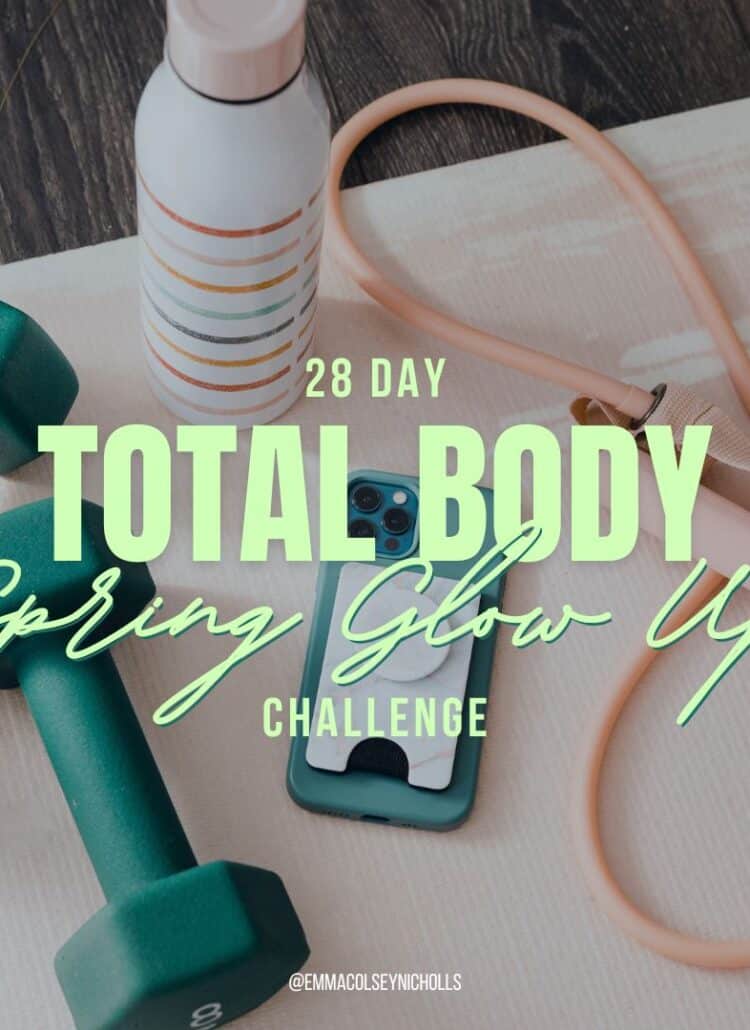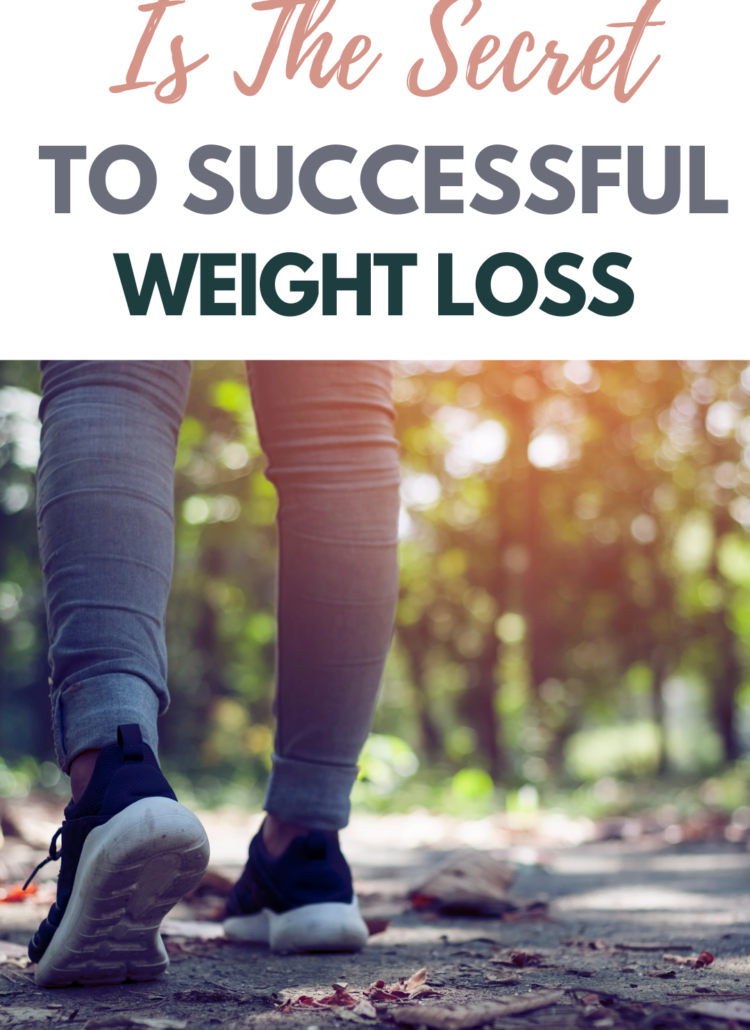
Learn the best way to lose weight without counting calories.
Want to lose weight, but can’t be fussed with tracking food or counting calories? I hear you, me neither!!
The truth is that calories do matter, but I feel that dieters and diets have put too much emphasis on them. Recently the UK government introduced putting the number of calories on menus in all UK restaurants. Was it a smart move? Well some beg to differ.
And is tracking your calories the only answer when it comes to weight loss?
Pros & Cons Of Calorie Tracking
There are certainly pros and cons when it comes to tracking calories.
It can have a place, even though it’s not always entirely accurate.
Our bodies absorb energy differently, not to mention the hormonal shifts that eating different foods can have on the body. For example, eating 300kcal of salmon will create a much different effect on the body than eating a 300kcal doughnut.
One will leave you feeling fuller and provide your body with essential nutrients and minerals, and the other will leave you wanting to indulge in yet another crispy creme as your ‘stop eating’ switch fails to register.
So whilst calories do matter, they are not all created or absorbed equally.
Having said that having calories on a menu or tracking your food for a number of days can be helpful to find some base guidelines, especially for many people that massively underestimate how much they eat.
Tracking for a period of time can actually help you to become more mindful of your overall food consumption and the reason it works for many people is that they just start to pay more attention. Yet for others, it can become a form of obsessiveness and lead to negative feelings and behaviours around food.
But there is no getting away from the fact that counting calories is time consuming, not to mention boring AF. Even as a health coach cannot be bothered tracking my food for more than a few days. There is more to life than that snoozefest.
Instead, I like to work with proven strategies that we can implement as everyday habits. Habits that aid my clients (and myself) to be more mindful of food intake but where you don’t have to give up every other aspect of your life to be able to implement.
So how do we manage a get lean eating plan without having to count calories?
1. Choose natural whole foods first
Foods that are as close to their natural form as possible. The further we move away from nature, the more unhealthy we become.
Less processed foods tend to be less calorie-dense by their nature. They are better for the body, they are not as easy to overeat and will provide your body with the vitamins and minerals it needs to thrive.
One study showed that eating whole foods has a higher impact on the thermic effect of food (meaning you burn more calories to just digest your food) and also increases feelings of fullness, meaning that you need to eat less of it.
ACTION — Simply eat more natural foods that come as nature designed.
2. Opt for carbohydrates that are high in water
As much as the low carb or Keto warriors will have you believe, carbs are not the devil, they are an essential part of your diet, they fuel your body and muscles for training, you don’t need to fear them.
ACTION — Choose carbs that have a higher water content like oats, rice, quinoa, beans, legumes and potatoes. As opposed to dry carbs such as pasta, bread and crisps/chips. Again this is to help you feel fuller and more satisfied from the high water content, and so better balance out your hunger levels without being able to easily overeat.
3. Prioritise lean protein sources
Again this comes to satiation, they leave your stomach with that lovely feeling of fullness and it’s essential to fuel to build and sustain muscle. More muscle creates more metabolic burn meaning your body is better primed for burning and using up fuel in the body.
We often get told that it’s downhill after 30, and that this could be due to our reduced metabolism, but a new study finds that this may not be the case as the metabolism doesn’t start to slow until about the age of 60.
But what may be the contributing factor is the loss of muscle mass, particularly in women. This is why it’s essential to maintain muscle mass in our later years
This is particularly important in women approaching menopause when muscle mass starts to decline further.
ACTION — Include lean proteins at most if not all meals and aim for 25–30g of protein at each meal. Lean proteins include chicken, turkey, game meats, fish, lean cuts of beef, fish, shellfish, lean cuts of pork and eggs.
4. Eat Your Veggies First
This is such a simple strategy, but when I started to apply this I noticed a distinct difference in noticing fullness cues and being able to stop eating when I felt like I’d had enough.
ACTION — When eating meals, eat your veggies first. Fill up on nutrient-dense goodness first of all, then move on to protein and finish with the carbs last. Of course, there will be times when you just want to enjoy eating your food altogether and I do encourage that, but being mindful of starting with nutrients first is a good habit to install.
5. Balance Your Plate
I have talked about using the hand measure method before in my article 11 Simple Strategies To Help You Lose Weight Naturally but I think the plate portion method is sometimes easier to see when portioning out your plate.
ACTION — Bulking your plate with ½ of the space with veggies, ¼ of the plate with protein and ¼ of the plate with starch or fats. Think about having veggies and protein as the core of your diet.

6. Train Lean
Maintaining a lean body will come primarily from maintaining more lean muscle. This helps to keep a flexible metabolism, meaning your body burns more even at rest.
ACTION — Complete at least 2 strength training sessions and one high-intensity metabolic session per week.
7. Move Daily
Modern-day living means more sedentary living for many of us that are sat behind computers for many hours a day. In the 60’s it was only really athletes that did formal exercise, everyone else just got on with living their lives because it involved so much more movement. Plus we ate less processed foods back then too.
If you already have an active job then awesome you may well already get enough movement in your day. If you are computer-based it’s likely that you are going to have to be a bit more intentional about getting up and moving. I know you have probably hear this a million times, but are you actually doing it?
Get into the habit of moving more daily outside of your workouts. Daily movement is known as your Non-Exercise Activity Thermogenesis (NEAT) and it makes up the largest part of your daily energy expenditure. Studies also show that daily movement was a far better predictor of health than even intense exercise.
ACTION — Don’t underestimate daily movement. Get up and walk as this allows you to move, but it also has the benefit of being stress-busting too. If you can aim for at least 10,000 steps per day as a guide.
So take these on board today and see which elements you want to start applying this week. Let me know which of these stood out most for you.
So if you don’t want to spend your life obsessed over every morsel of food. These 7 steps are simple and some of the best ways to lose weight without counting calories.
If you enjoyed this article please consider sharing it with a friend or on your social channels. Your support really goes a long way in helping me to create more free articles for you that are packed with tips and tools to support you on your health journey.
Want to take it to the next step CLICK HERE and join the FREE 5 day Better Body Kickstart challenge today.




Leave a Reply